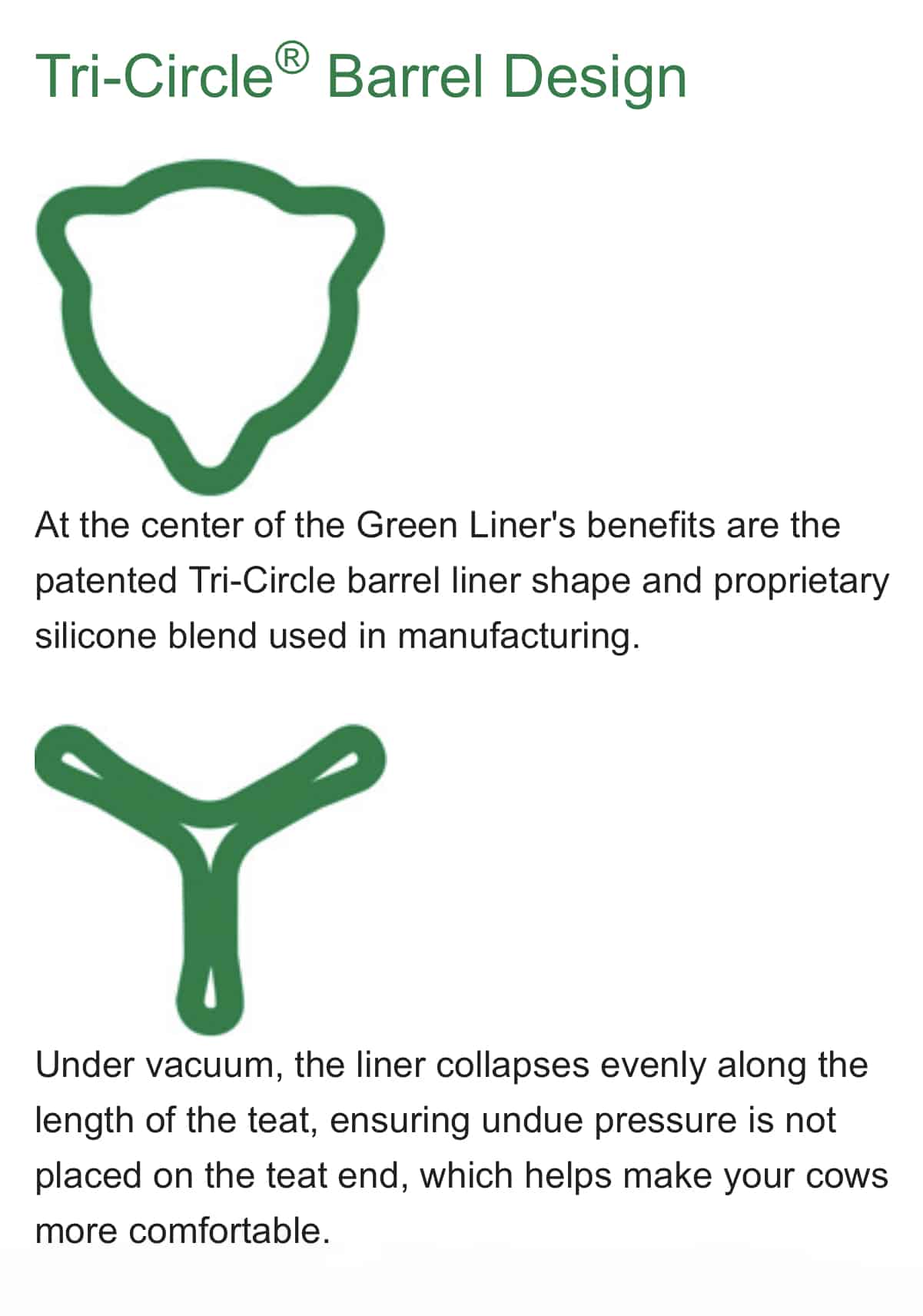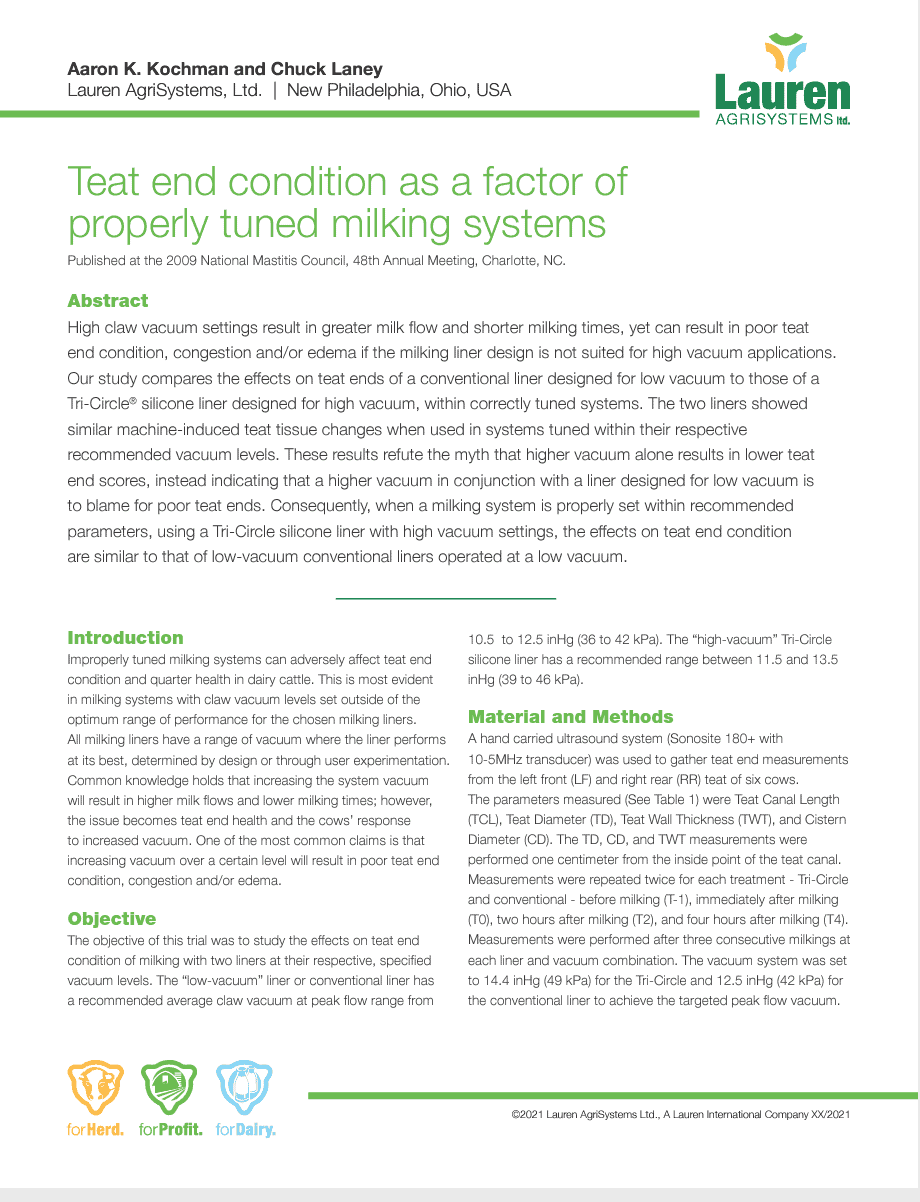Abstract:
High claw vacuum settings result in greater milk flow and shorter milking times, yet can result in poor teat end condition, congestion and/or edema if the milking liner design is not suited for high vacuum applications. Our study compares the effects on teat ends of a conventional liner designed for low vacuum to those of a Tri-Circle® silicone liner designed for high vacuum, within correctly tuned systems. The two liners showed similar machine-induced teat tissue changes when used in systems tuned within their respective recommended vacuum levels. These results refute the myth that higher vacuum alone results in lower teat end scores, instead indicating that a higher vacuum in conjunction with a liner designed for low vacuum is to blame for poor teat ends. Consequently, when a milking system is properly set within recommended parameters, using a Tri-Circle silicone liner with high vacuum settings, the effects on teat end condition are similar to that of low-vacuum conventional liners operated at a low vacuum.
Introduction:
Improperly tuned milking systems can adversely affect teat end condition and quarter health in dairy cattle. This is most evident in milking systems with claw vacuum levels set outside of the optimum range of performance for the chosen milking liners. All milking liners have a range of vacuum where the liner performs at its best, determined by design or through user experimentation. Common knowledge holds that increasing the system vacuum will result in higher milk flows and lower milking times; however, the issue becomes teat end health and the cows’ response to increased vacuum. One of the most common claims is that increasing vacuum over a certain level will result in poor teat end condition, congestion and/or edema.
Objective:
The objective of this trial was to study the effects on teat end condition of milking with two liners at their respective, specified vacuum levels. The “low-vacuum” liner or conventional liner has a recommended average claw vacuum at peak flow range from 10.5 to 12.5 inHg (36 to 42 kPa). The “high-vacuum” Tri-Circle silicone liner has a recommended range between 11.5 and 13.5 inHg (39 to 46 kPa).
Conclusion:
This study demonstrates that expectations of machine-induced changes in teat tissue for milking with the Tri-Circle Liner at a higher vacuum should not be any different than milking with a conventional liner at a lower vacuum. Therefore, it makes possible the advantages of milking with increased vacuum (higher milk flows and decreased milking times) while avoiding congestion at the teat end and the build-up of hyperkeratosis
Click here to read the full white paper and see the testing parameters.


